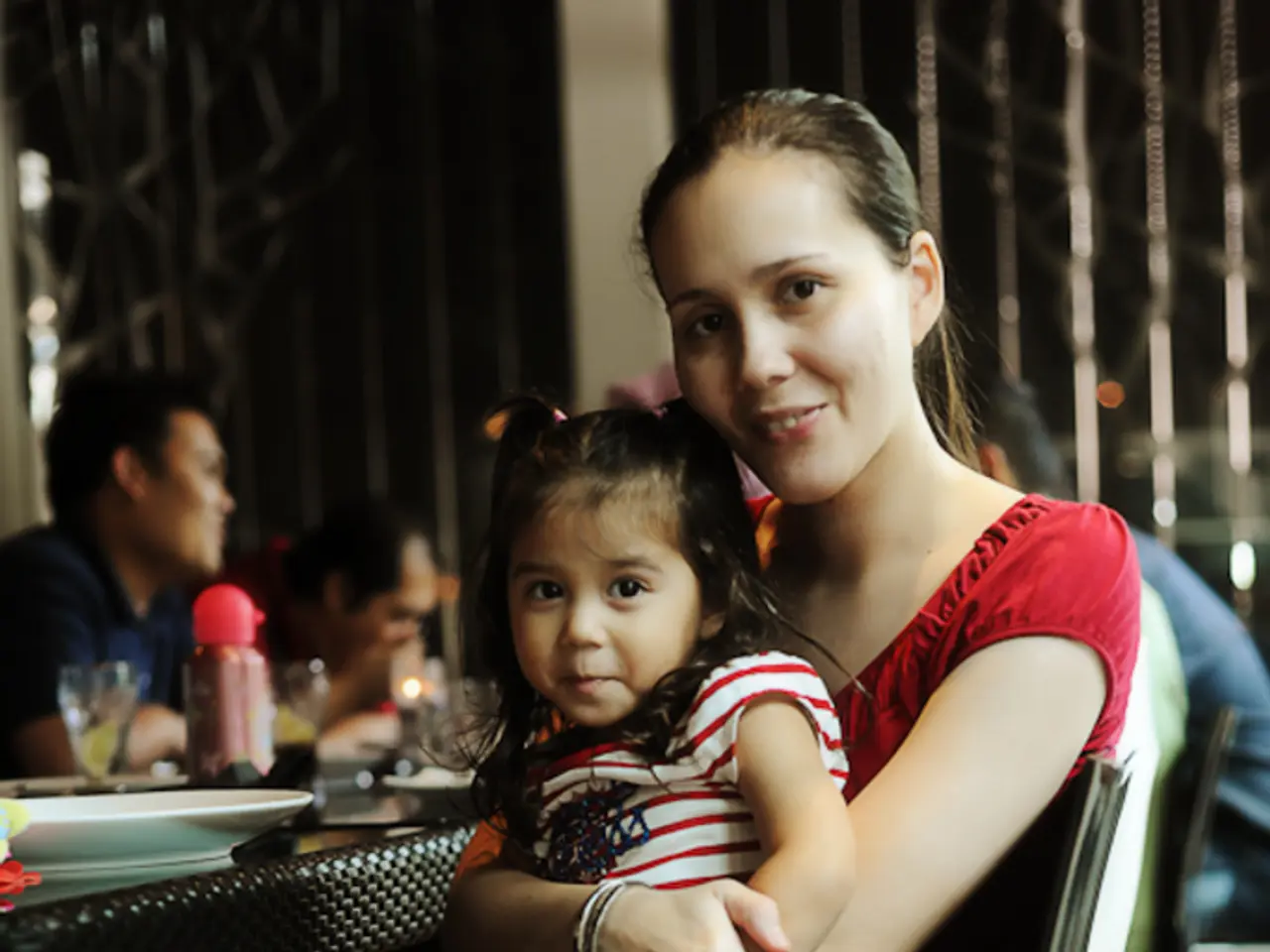Expanded Parental Leave: Mothers Tend to Take Advantage More Frequently Than Fathers of Staying at Home - Mothers tend to stay at home more frequently than fathers when it comes to child rearing with regard to child benefit eligibility.
In Germany, a significant gender disparity has been observed in the application and utilization of child sickness benefit (Kinderkrankengeld). According to data from Barmer, one of the country's largest health insurance companies, mothers are more likely to apply for this benefit compared to fathers.
This trend can primarily be attributed to traditional caregiving roles and gendered patterns of parental responsibility. Mothers are statistically more likely to take time off work to care for a sick child, reflecting societal norms and possibly flexible working arrangements that enable this.
On the other hand, fathers less frequently claim child sickness benefit. This could be due to a combination of workplace culture, less uptake of parental leave, and societal expectations about gender roles in caregiving.
The child sickness benefit, which allows parents to take unpaid leave from work while receiving some compensation to care for a sick child, is a statutory benefit available to all parents in Germany, regardless of their location. Parents with more than two children can receive this benefit for up to 35 days, and single parents with more than two children can receive it for up to 70 days.
In 2021, there were 365,000 applications from women and 139,000 from men for child sickness benefit. This trend continued in 2023 and 2024, with women accounting for a larger number of applications and payment days. For instance, in 2024, Barmer recorded 877,000 payment days for child sickness benefit, with 648,000 for women and 229,000 for men.
The CEO of Barmer, Christoph Straub, stated that the higher number of child sickness benefit applications from women reflects the persistent unequal distribution of family care responsibility.
It's important to note that parents can apply for child sickness benefit at their health insurance company, even if they work from home. The benefit is usually 90% of the lost net wage, and single parents are entitled to 30 days of child sickness benefit per child.
This disparity aligns with broader patterns seen in parental leave usage, where mothers claim a larger share of parental benefits and reduce working hours more significantly to care for children. Cultural and structural factors contribute to this disparity, with workplace expectations potentially discouraging fathers from taking leave, and mothers having more flexible schedules or stronger social expectations to provide child care.
In conclusion, the greater application rate by mothers is driven by traditional caregiving roles and the social-economic framework in Germany encouraging female primary caregiving, which is reflected in the use of child sickness benefits. Barmer's data indicates a significant difference in the number of child sickness benefit applications and payment days between men and women in Germany.
- To address the disparity in the application of child sickness benefit, a community policy could be proposed that encourages equal distribution of family care responsibility, such as providing vocational training for fathers on how to balance work and family.
- As the health-and-wellness of both parents significantly impacts women's health and parenting, offering vocational training to fathers on child care could lead to improved family outcomes, promoting a better work-life balance and reducing stress on mothers.




